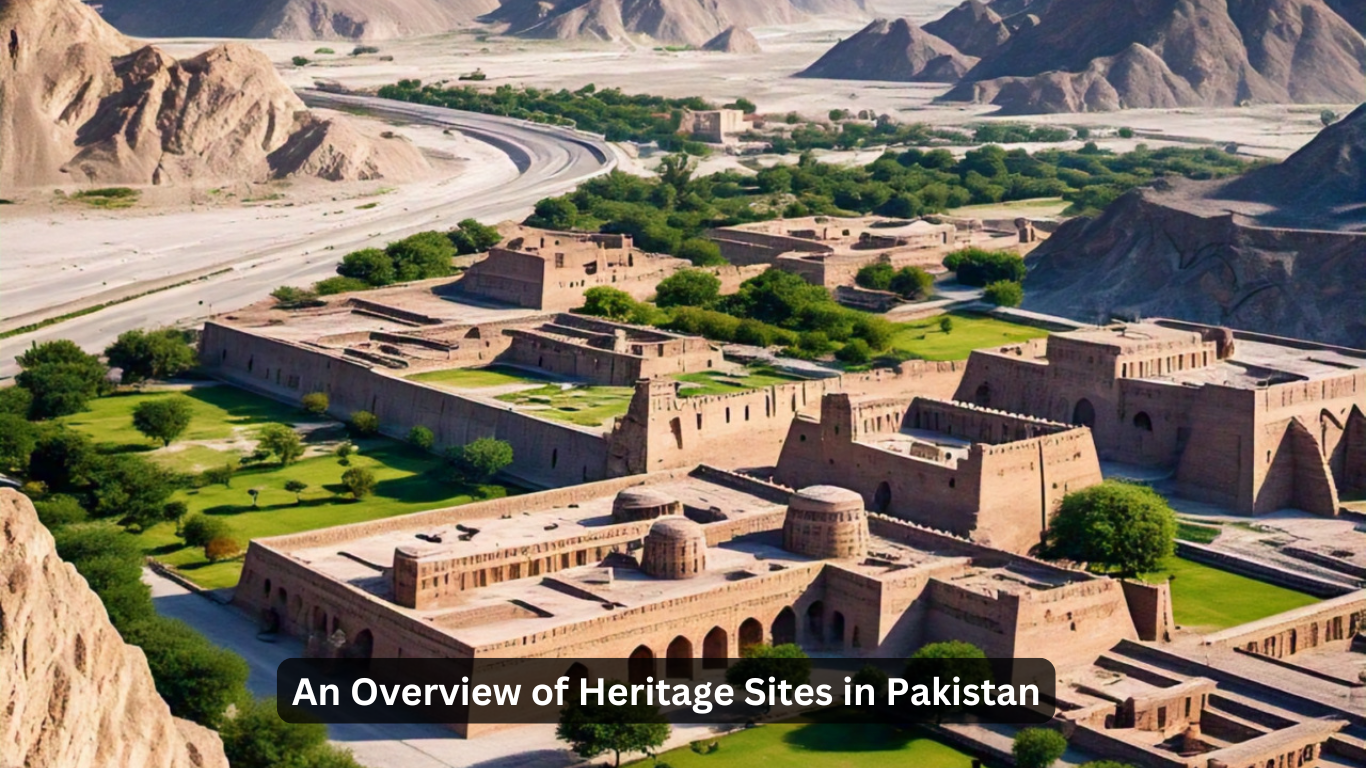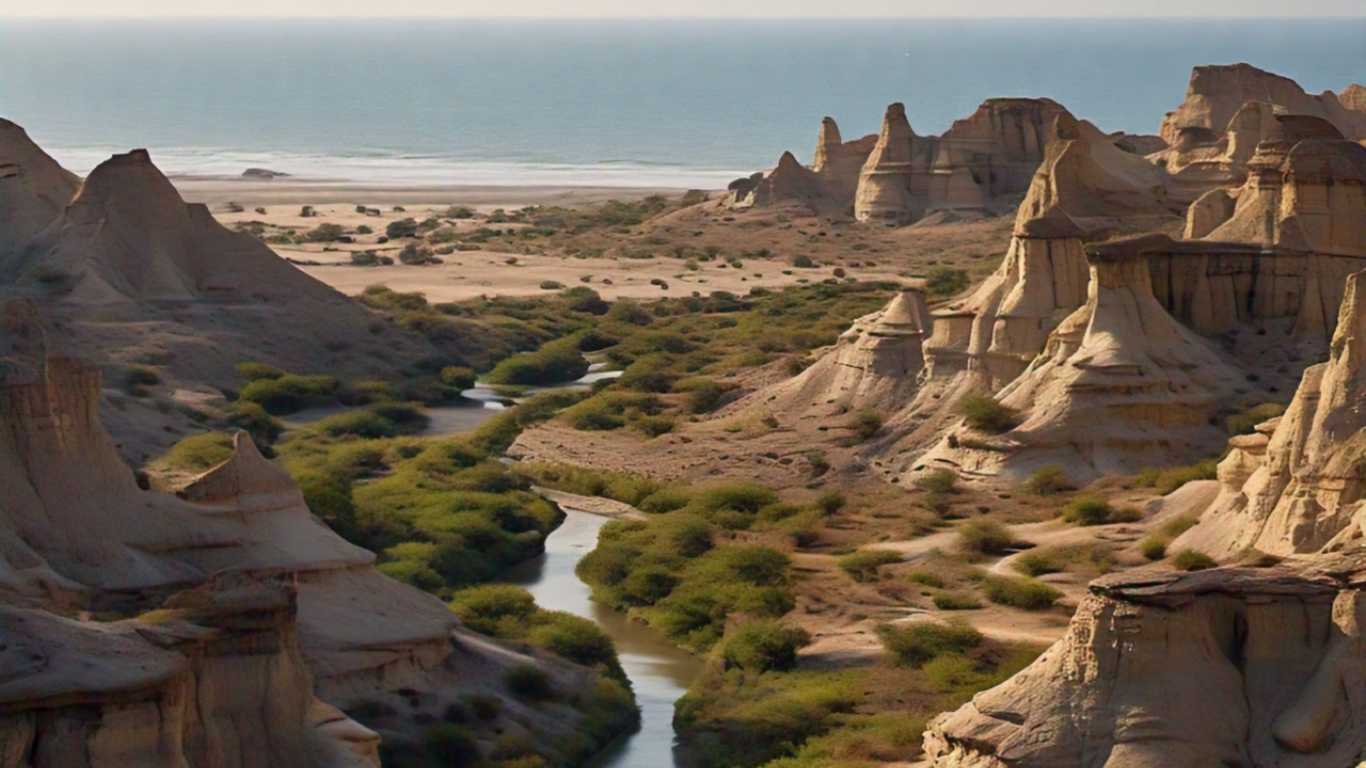An Overview of Heritage Sites in Pakistan

Pakistan, a land of ancient civilizations and cultural richness, is home to many heritage sites that narrate tales of its glorious past. These sites reflect the region’s diverse history, culture, and traditions, showcasing influences from ancient Indus Valley civilizations, Islamic architecture, and colonial rule. Pakistan’s heritage sites are not only a treasure trove of historical knowledge but also serve as an inspiration for those passionate about culture and history. From ancient archaeological ruins to majestic forts and mosques, these sites hold immense significance for the nation and the world.
Mohenjo-Daro: The Ancient Indus Valley Civilization
Mohenjo-Daro, a UNESCO World Heritage Site, is one of Pakistan’s most significant archaeological treasures. Located in Sindh province, it dates back to around 2500 BCE and is a prime example of the advanced urban planning of the Indus Valley Civilization. The city boasts a sophisticated drainage system, public baths, and well-structured streets, offering a glimpse into a highly organized and prosperous society. The artifacts discovered here, including seals, pottery, and sculptures, provide valuable insights into the culture, trade, and daily lives of its inhabitants.
Taxila: A Cradle of Buddhist Learning
Taxila, situated near Islamabad, is another UNESCO World Heritage Site with immense historical and religious significance. This ancient city was a renowned center of learning and culture, particularly during the Gandhara period. Taxila is home to numerous stupas, monasteries, and archaeological remains that attract scholars and tourists alike. The Dharmarajika Stupa, Jaulian Monastery, and Sirkap city ruins are among the highlights of this site. Taxila’s historical and cultural heritage makes it a vital link in understanding the spread of Buddhism across Asia.
Lahore Fort and Shalamar Gardens: Mughal Splendor
The Lahore Fort and Shalamar Gardens, both UNESCO World Heritage Sites, are stunning examples of Mughal architecture. The Lahore Fort, also known as Shahi Qila, showcases intricate designs, marble inlays, and vibrant frescoes. It served as the residence of Mughal emperors and remains a symbol of their grandeur. The Shalimar Gardens, located nearby, is a masterpiece of landscape design with terraced lawns, fountains, and ornamental pools. These sites reflect the artistic and architectural brilliance of the Mughal era.
Rohtas Fort: A Strategic Marvel
Rohtas Fort, situated near Jhelum, is a UNESCO World Heritage Site and a testament to the military ingenuity of the 16th century. Built by Sher Shah Suri, this massive fort was designed to thwart the advances of the Mughal emperor Humayun. Its impressive walls, bastions, and gateways are prime examples of Indo-Islamic architecture. The fort’s strategic location and robust construction make it one of the most remarkable heritage sites in Pakistan.
Makli Necropolis: A City of the Dead
The Makli Necropolis in Sindh is one of the largest funerary sites in the world and a UNESCO World Heritage Site. Spanning over 10 square kilometers, it houses thousands of beautifully decorated tombs and mausoleums that date back to the 14th century. The architectural styles of Makli represent a blend of Islamic, Persian, and Hindu influences, showcasing the cultural diversity of the region. The intricate carvings and inscriptions on the tombs are a testament to the artistic achievements of the time.
Badshahi Mosque: A Mughal Masterpiece
The Badshahi Mosque, located in Lahore, is one of the largest mosques in the world and a symbol of Mughal architectural brilliance. Built by Emperor Aurangzeb in 1673, this mosque is renowned for its grandeur and elegance. Its red sandstone structure, intricate calligraphy, and expansive courtyard make it a breathtaking sight. The Badshahi Mosque holds significant religious and historical importance, attracting worshippers and tourists from around the globe.
Hingol National Park: A Natural Heritage Site

Hingol National Park, located in Balochistan, is a unique heritage site that combines natural beauty with cultural significance. Spanning over 6,100 square kilometers, it is home to diverse wildlife, unique rock formations, and the iconic Princess of Hope statue. The park also houses ancient Hindu temples, such as the Hinglaj Mata Temple, which holds great religious importance. Hingol Nature Reserve illustrates this same cultural and natural heritage of Pakistan.
Derawar Fort: A Desert Jewel
Derawar Fort, located in the Cholistan Desert, is a magnificent structure that is a testament to Pakistan’s rich history. Built in the 9th century, the fort’s massive walls and imposing structure dominate the desert landscape. The fort’s historical significance and architectural grandeur make it an essential part of Pakistan’s heritage.
Cultural Festivals at Heritage Sites
Heritage sites in Pakistan often serve as venues for cultural festivals and events that celebrate the country’s rich traditions. These festivals provide a unique opportunity to experience the vibrant culture, music, and cuisine of Pakistan while appreciating its historical landmarks. Events like the Lahore Literary Festival, Sindh Festival, and Cholistan Desert Rally attract visitors from across the globe.
Conclusion
Pakistan’s heritage sites are a testament to its rich history, cultural diversity, and architectural brilliance. Preserving these sites is essential for future generations to appreciate and learn from their historical significance. Efforts must be made to promote sustainable tourism and raise awareness about the importance of heritage conservation. By celebrating and protecting these treasures, Pakistan can continue to showcase its unique identity to the world.
FAQs
1. What are the most famous heritage sites in Pakistan?
Some of the most famous heritage sites in Pakistan include Mohenjo-Daro, Taxila, Lahore Fort, Badshahi Mosque, and Rohtas Fort.
2. How many UNESCO World Heritage Sites are there in Pakistan?
Pakistan has six UNESCO World Heritage Sites: Mohenjo-Daro, Taxila, Lahore Fort, Shalimar Gardens, Rohtas Fort, and Makli Necropolis.
3. Why is Mohenjo-Daro significant?
Mohenjo-Daro is significant because it was one of the most advanced cities of the Indus Valley Civilization, showcasing remarkable urban planning and architecture.
4. What is the architectural style of Lahore Fort?
The architectural style of Lahore Fort is a blend of Mughal, Persian, and Indian influences, characterized by intricate designs and vibrant frescoes.
5. How can we preserve heritage sites in Pakistan?
Heritage sites can be preserved through proper maintenance, raising public awareness, implementing strict conservation policies, and promoting sustainable tourism.













